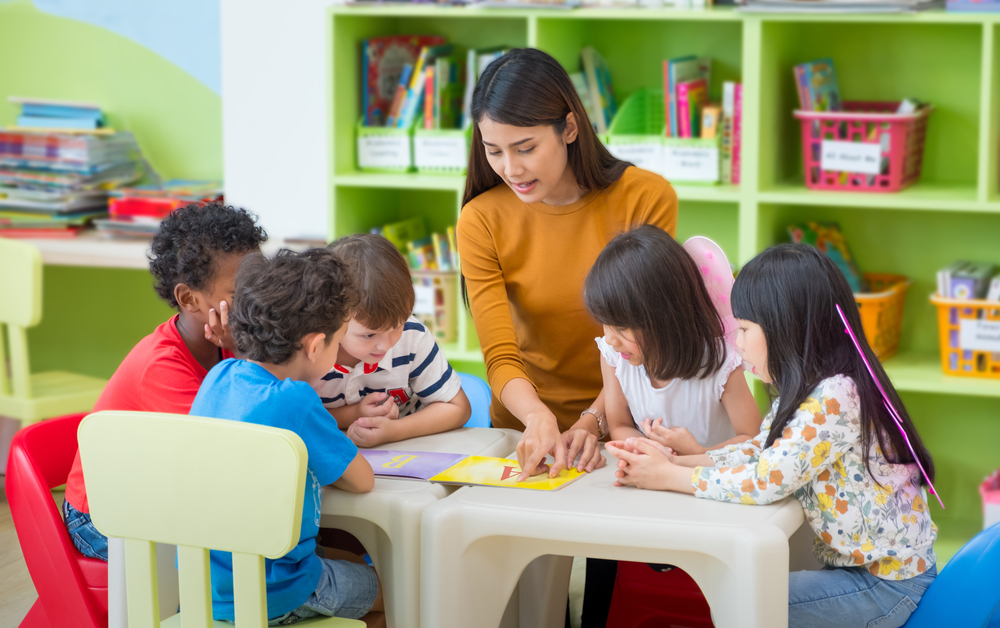As children across the country return to classrooms, the American Speech-Language-Hearing Association (ASHA) is offering families information about speech and language services in the schools.
Annually, more than 1 million students (ages 3 to 21) receive special education services for speech and language disorders through public schools. These students usually work with speech-language pathologists (SLPs)—professionals who help people of all ages with communication and swallowing disorders.
“Gaining an understanding of how the special education process works can seem overwhelming, but this information can help families learn how schools can best meet their child’s unique needs—working together with parents and caregivers,” said ASHA President Judy Rich, EdD, CCC-SLP, BCS-CL. “Speech-language pathology services can allow students to realize their full academic potential and be confident communicators who thrive socially.”

Here are 10 facts for families to keep in mind if their child is beginning speech and language services this school year:
1. Speech and language services are part of special education law. The Individuals With Disabilities Education Act (IDEA) is a federal special education law that guarantees students with disabilities a free appropriate public education. As such, students who receive speech and language services in school, and their guardians, are afforded certain legal rights and protections. Students must be found eligible for services (more on that below), which starts with an evaluation.
2. Parents/guardians must consent to an evaluation. The school must obtain a family’s permission before conducting a speech and language evaluation. Parents/guardians can request an evaluation themselves by contacting a school official, such as their child’s teacher or the principal. Alternatively, school personnel may contact families when they believe a student should receive an evaluation. Family members provide key information, including medical and educational history as well as any specific concerns.
3. SLPs conduct evaluations in the language(s) a student uses—not solely spoken English. For students who use multiple languages, the evaluation must be conducted in their languages through a bilingual SLP or an SLP working with an interpreter. Families also have a right to an interpreter during all meetings as well as written information in their preferred language, as needed.
4. Speech and language services address a range of challenges. Treatment by SLPs in schools can help students who have difficulties with expressing themselves, listening, reading, and writing; social communication; memory, problem-solving, and thinking skills; and eating and drinking.
5. A student’s needs and goals are documented in an individualized education program (IEP). Once the school completes an evaluation and produces a written report, a team of school staff and the student’s family meet to decide if the student is eligible for special education. To determine whether a student meets the requirements for needing an IEP to help them access the educational environment, the team answers three questions:
- Is there a disability?
- If so, is the child’s disability causing an adverse effect on their educational performance?
- If so, are specially designed instruction and/or related services and supports needed to help the student progress in the general education curriculum?
6. An IEP is specific and highly personalized. The IEP team, including parents/guardians, work together to design the IEP to meet the student’s educational needs that result from the disability in order to provide supports that allow the student to be involved in and make progress in the general education curriculum—and to participate in extracurricular and other nonacademic activities. IDEA requires that the IEP include specific information about the frequency, location, and duration of the services needed to help students master their IEP goals.

7. IEP goals are designed to be met within one school year—and a new IEP is required each year. If necessary, the team can revise the IEP during the year. Parents/guardians take part in writing each new or revised IEP.
8. Progress reporting to families is ongoing. Families will receive updates when report cards are issued. The school will update progress toward every goal included in the IEP. Keeping up with what their child is doing in school can help families determine how they can best support and encourage their child at home.
9. Schools must keep students with their peers as much as possible. A student with an IEP is required to be educated in the “least restrictive environment.” This means that a child should learn with their peers as much as possible. Students should be dismissed from the speech-language program when their disability no longer interferes with their ability to communicate effectively and to learn in the classroom.
10. Families have options if they disagree with the IEP team. Parents/caregivers may ask for an IEP team meeting if they feel that something isn’t working. Providing as many details as possible helps the team understand the problem. When a family and school don’t agree, it’s important for all parties to work together positively and reach a compromise, which may be temporary. If the family still isn’t satisfied, they can take the next steps detailed in their parental rights packet (called procedural safeguards).
Learn more about speech and language services in schools on ASHA’s website.






